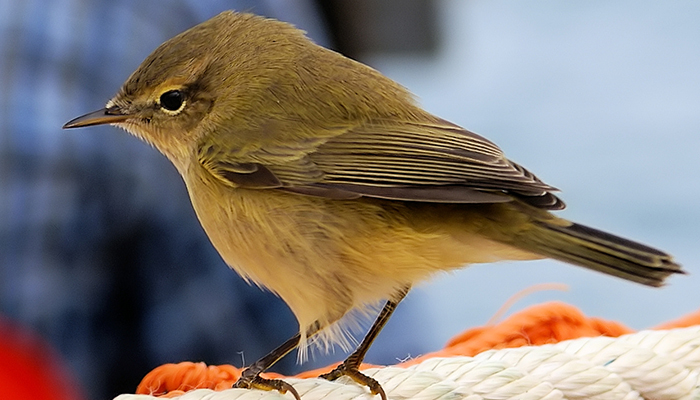
English: Common Chiffchaff, Siberian Chiffchaff
Russian: Пеночка-теньковка
Mongolian: Урианхайн дуучшувуу
German: Zilpzalp
French: Pouillot veloce
Japanese: チフチャフ (Chifuchafu)
Body length: 10-12 cm.
Breeds in woodland, normally open and with tall
deciduous trees and moderate scrub layer (locally also in conifer forest with
some broadleaved mixed in). Mainly summer visitor to Britain & Ireland (mid
Mar-Oct), winters around Mediterranean and partly S of Sahara; scarce in
Britain in winter, when also in scrub, reeds, gardens, etc. Active, confident.
Nests on ground in domed cup.
Identification:
Quite similar to Willow Warbler, but slightly smaller, more compact and with
duller colors. Grey-tinged brownish-green above, off-white below with variable
yellow and buff tinge on throat and breast. Often more distinct element of
buffy-brown on breast-side, especially in autumn, than shown by Willow Warbler.
Distinguished by: dark legs; fine, often rather dark bill; usually rather short
and indistinct pale supercilium; moderately dark eye-stripe which divides
whitish eye-ring at front and rear; rather uniformly dark below eye and on
ear-coverts, so that white lower eye-crescent shows well; short primary
projection. Habitually dips tail downwards when moving in canopy (not seen from
Willow Warbler). –Variation: Birds in the greater part of Europe (ssp.
collybita) and in N Fenno-Scandia (abietinus) are very similar, but abietinus
averages a shade paler, and greyer above; in the extreme NE, green and yellow
elements in the plumage gradually decrease.